What did dressing during the Victorian era look like? It was a lot more involved than making sure you had a corset and the right style of dress for the occasion! It also involved a LOT of layers and a LOT of time to make sure that you got each one just right. Here’s a glimpse into what women went through on a daily basis in the mid-19th century and how you can make your next Victorian costume truly authentic.
Underwear
- Stockings/Socks: The first item in the daily dressing routine was stockings or socks. Black stockings for daytime. Garters held up the stockings.
- Shoes/Boots: Shoes went on with the underwear because it was impossible to do once the corset was in place.
- Drawers: The next item was cotton drawers. Unlike today’s ladies undies, Victorian drawers were made of two flaps that overlapped and attached around the waist.
- Decency Skirt: This was a narrow petticoat which protected the nether region from view if the skirt was blown up by the wind.
- Chemise: Completing the first layer was a knee-length sleeveless undershirt of cotton or linen.
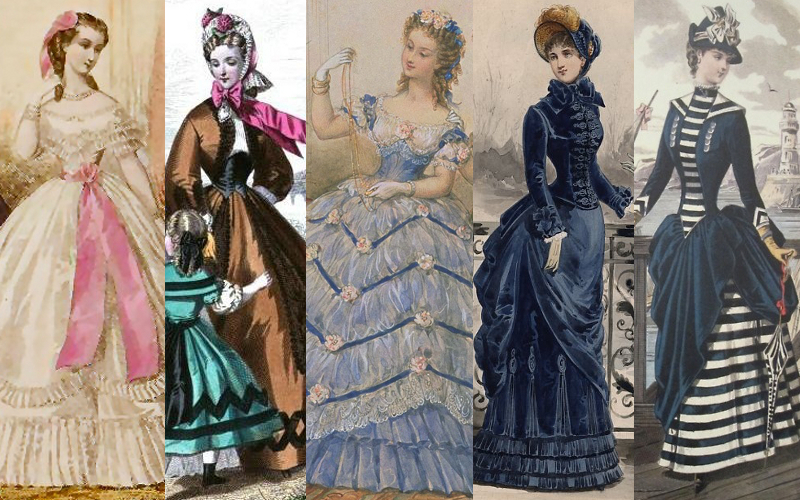
Victorian silhouettes 1860s – 1870s from Kate Tattersall
Forming the Silhouette
- Corset: Shaping the body into the fashionable form was done by means of whalebone sticks or steel. The corset not only pulled in the waist, it supported the bust (no bras back then). The corset changed over the decades, but for most of the Victorian era, the focus was on the hourglass figure. By the end of the 1860s corsets stopped a few inches below the waist. By the 1890s, they were long and extended over the hips, dipping low in the front and the back.
- Crinoline: Once hoop crinoline was developed in the mid 1850s, they became the norm under women’s dresses for about a decade. It was flexible, lightweight (compared to multiple layers of petticoats), and created the desired bell-shaped skirt. It took a lot of the weight out of dressing
- Bustle or Tournure: Crinolines evolved into bustles when emphasis moved to the rear of the skirt. Bustles varied from a bag filled with horsehair that was tied around the waist (1870s) to steel or whalebone cages (1880s) as below.
Learn more about bustles in our blog post: The Rise and Fall of the Bustle.
Protecting Outerwear
- Camisole/Corset Cover: a white, short, shirt-like garment worn over the corset to protect expensive outer garments from perspiration and oils.
- Petticoat: The petticoat protected the outer skirt from the steel or boning in the hoops. It also helped the skirt to lay flat over the crinoline. Sometimes, a second fancier embroidered petticoat that was designed to be seen was worn over the first.
Learn more about petticoats in our blog post: All About Petticoats.
The Dress
Dresses in the Victorian era consisted of two distinct pieces, the bodice and the skirt.
- Bodice: Bodices of the 1800s were very fitted. The waist was a cross between a traditional bodice and a jacket.
- Skirt: Skirts were mostly floor-length, and depending on the decade, contained a train that could be worn down or bustled.
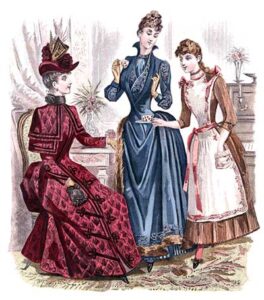
Accessories
Women were not considered properly dressed without certain accessories.
- Under sleeves: Often in white, under sleeves protected the hem of the sleeve and also protected against perspiration.
- Ruffles: Ruffles were often sewn into outdoor dresses to protect hems. Ruffles could be easily replaced when soiled.
- Shawl/Cape: Worn indoors or out, it . would offer another layer of protection to the dress and also protect against the weather.
- Gloves: Sometimes worn indoors, gloves most often protected hands from the effects of weather and also added a layer of modesty.
- Hat/Bonnet: The properly attired woman never left home without wearing one!
- Parasol: The parasol protected a woman’s skin from the sun.
- Fan: The fan was a must-have for women attending a ball.
Whew!! That’s a lot of requirements!
– Donna Klein
Learn more about Victorian era clothing:
Victorian and Edwardian Neckwear
The Rise and Fall of the Bustle
The rise and fall of puffy sleeves
Victorian traveling dress: guidelines for a proper ladyVictorian calling cards

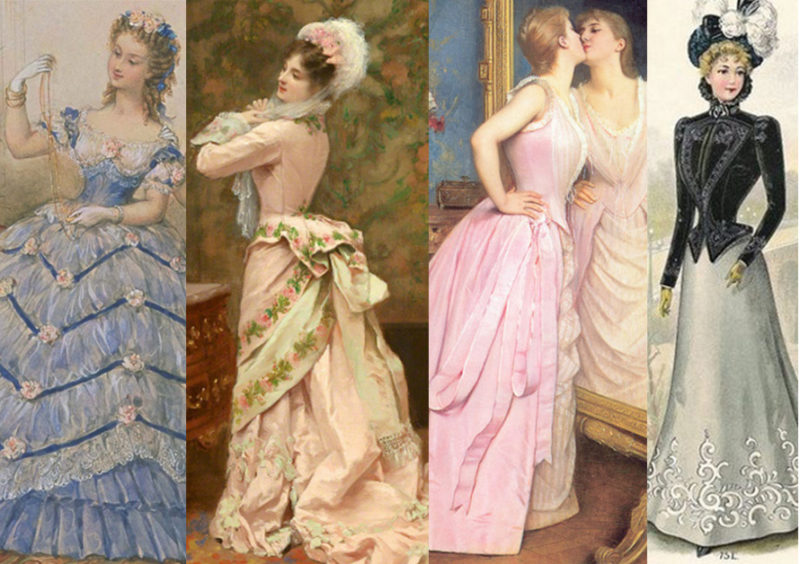
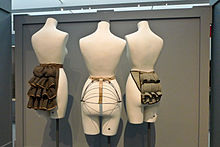
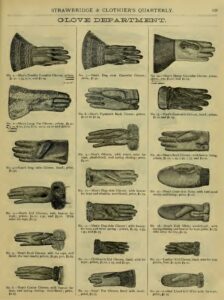
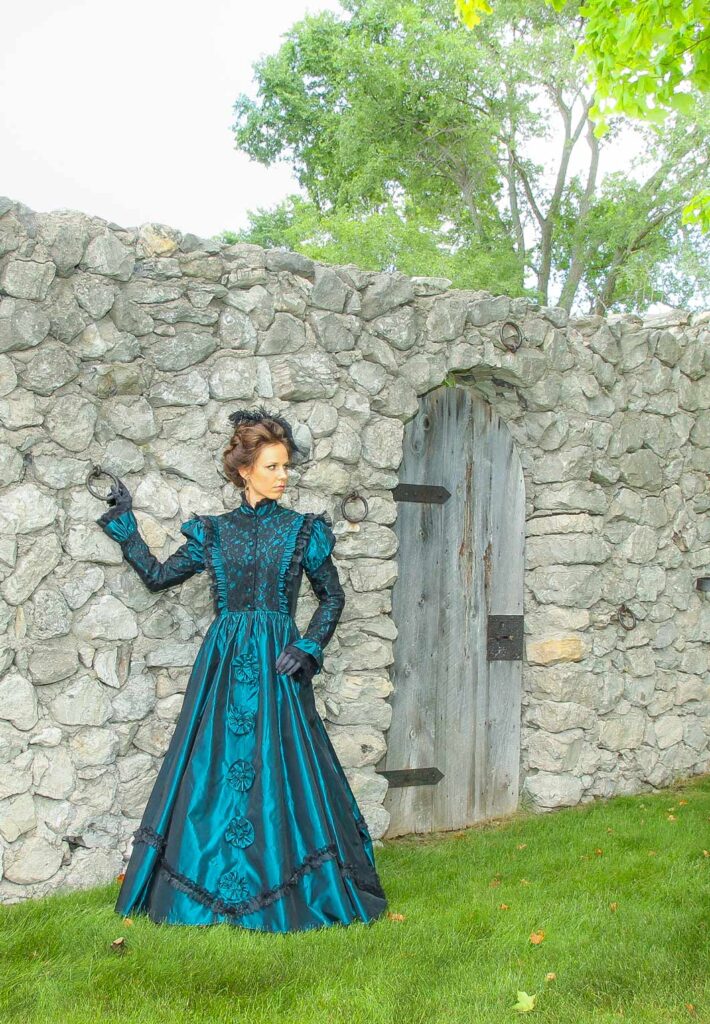
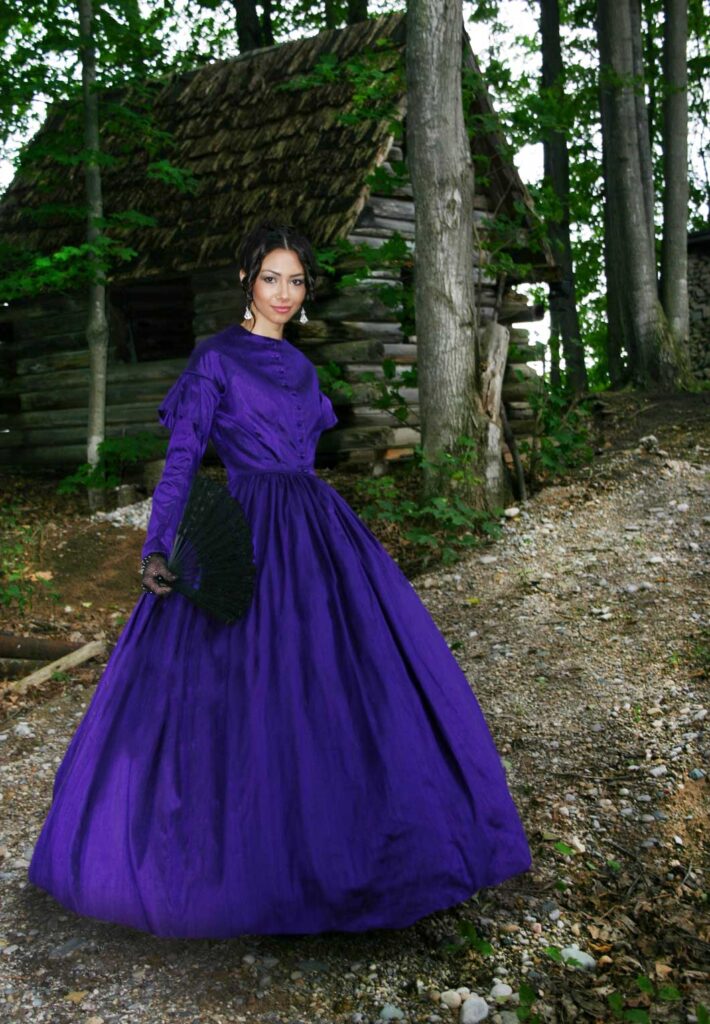
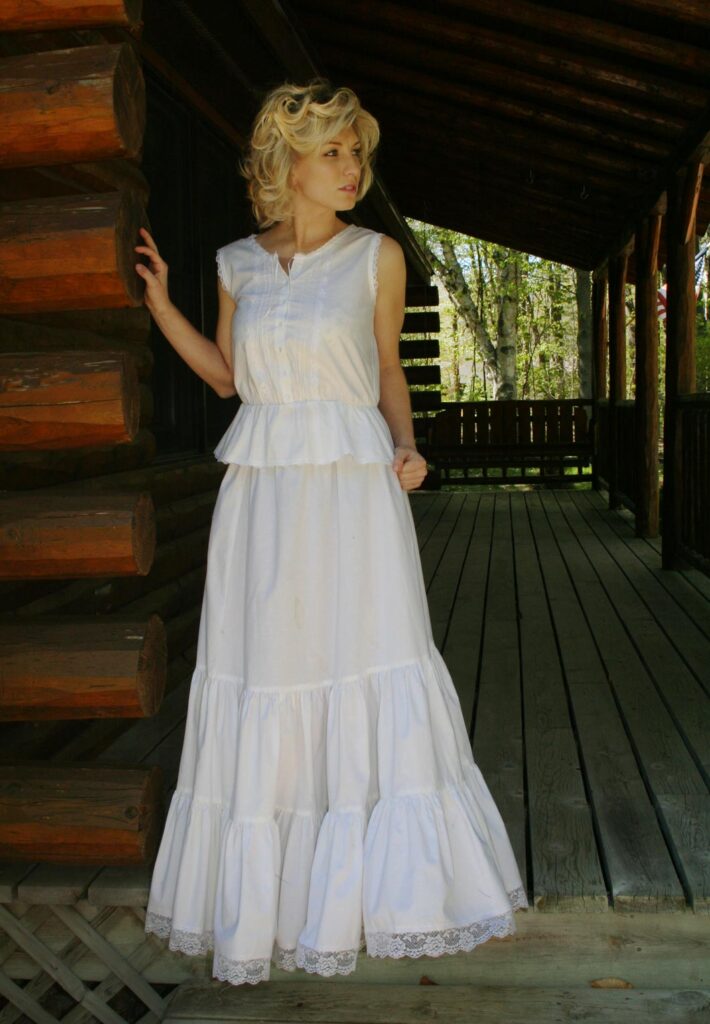
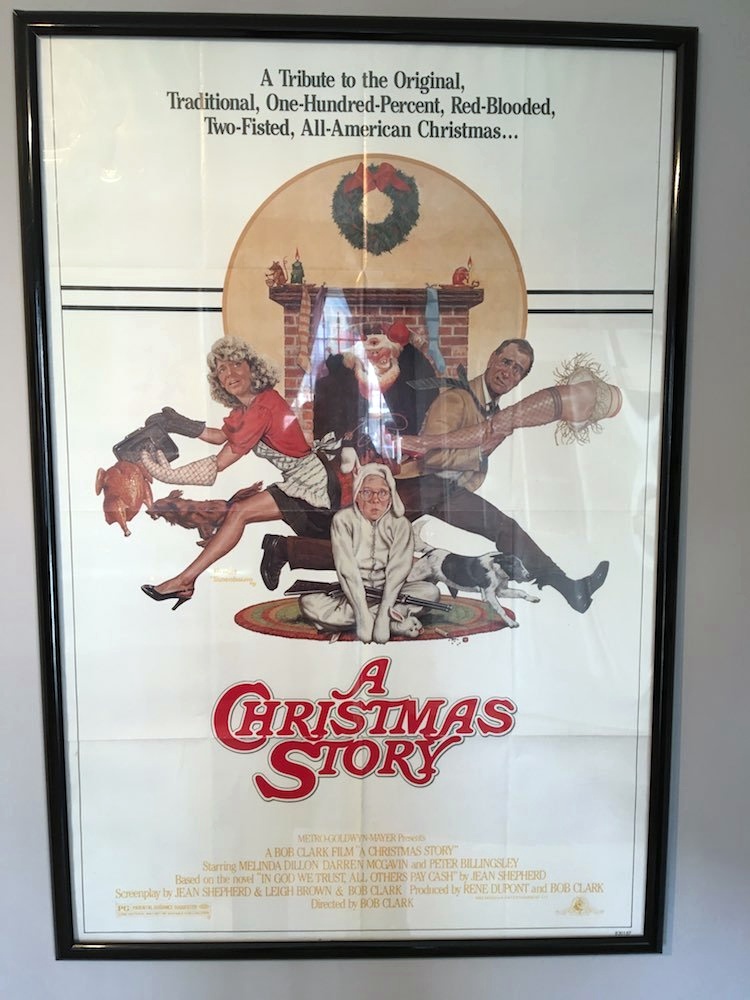









Leave A Comment